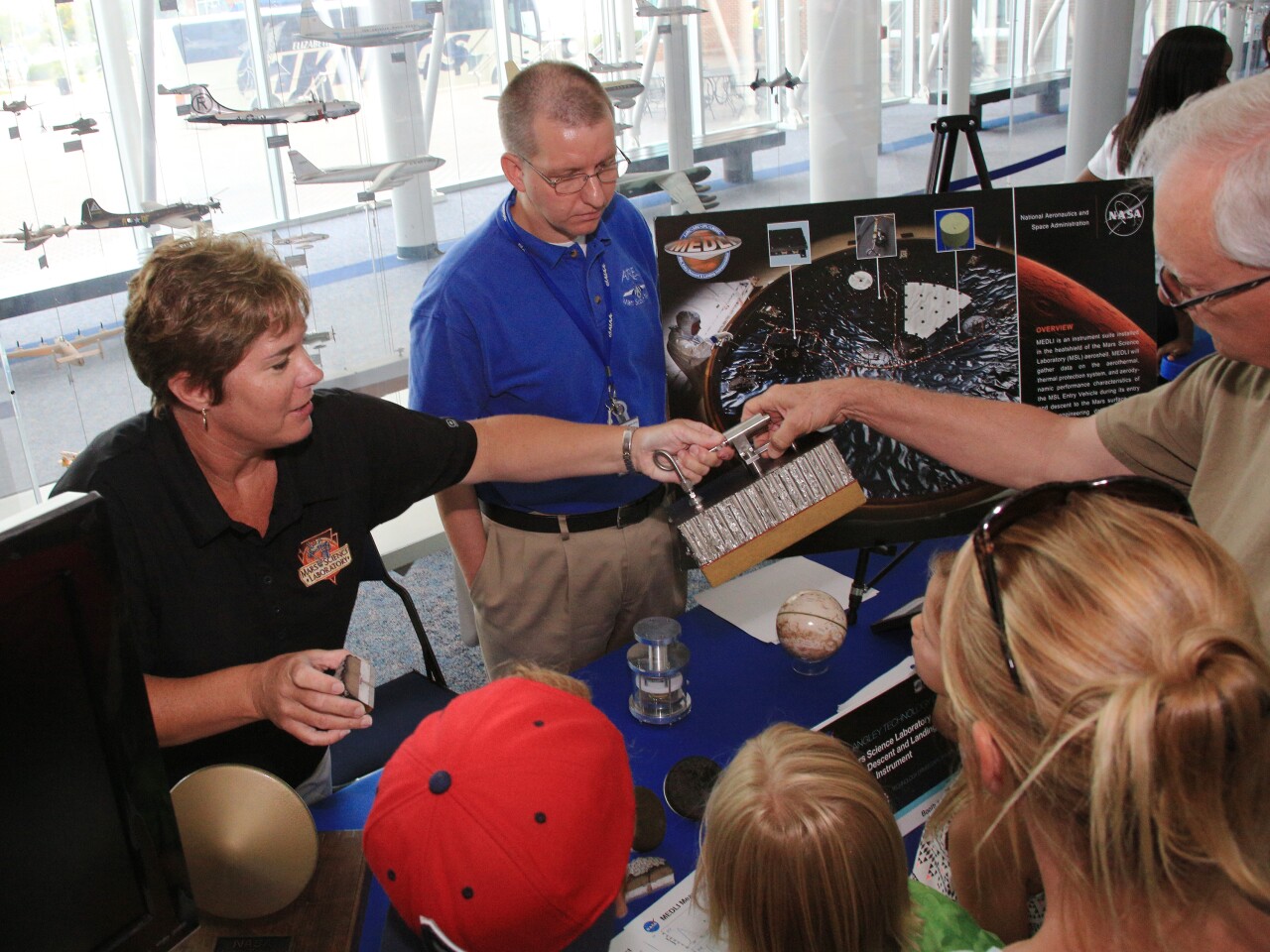HAMPTON, Va. - NASA Langley Research Center has a history of women taking charge.
Most well-known, following the release of the 2016 film Hidden Figures, are the stories of African American mathematicians Katherine Johnson and Dorothy Vaughan as well as engineer Mary Jackson, who not only broke barriers of gender, but race too.
They're three women who Michelle Munk can look up to while she works to help get humans to Mars.

Her work as NASA's Entry, Descent and Landing Capability Lead is critical in getting spacecraft safely to the Red Planet's surface. Continued development of that technology will be key with a goal of sending astronauts there in the 2030s.
"I don't think about it like that, but yeah, I guess it's true," Munk responded with a laugh during a Zoom call with News 3.

For Munk, the journey started when she was a kid.
“I had thoughts of being an astronaut. I found out my cousin went to Virginia Tech and co-oped with NASA. I said if I go to Virginia Tech and I co-op, I can work at NASA," she recalled.
Munk didn't end up working as an astronaut, instead opting for the aerospace engineer route. She's been with NASA for 33 years.

Her work has played a big role in the success of a number of missions.
Most recently, for the Mars Perseverance rover, she and other NASA Langley engineers had the task of getting it from orbit, through the Martian atmosphere and to the surface unharmed.
“It just brings tears to my eyes every time," Munk says of seeing video of the landing on Mars.
At NASA, the focus isn't only on other worlds. Much of the agency's research centers around what's happening on our own planet.
Laura Judd came to NASA Langley Research Center in 2016, but her work studying the quality of the air we breathe is a nationwide effort.
Judd is a research scientist and an Associate Program Manager with NASA's Health and Air Quality Applied Sciences Program.

“(I'm) coordinating and contributing to air quality field studies in coastal regions that suffer from poor air quality," she told News 3.
Judd's travels have taken her to places like the Great Lakes, Long Island and, coming up, Houston, where she and other scientists help local officials learn where their pollution is coming from.

Her research also helps confirm the accuracy of satellite readings on air quality.
"The COVID pandemic," she said. "How air quality has improved because people aren’t driving their cars and whatnot? Those measurements come from a satellite.”
It's crucial work in determining the immediate impact poor air quality can have on the health of people living in certain areas.

Judd, who grew up in Nebraska, tells News 3 she loved the weather as a kid.
She went to college at University of Nebraska where she studied meteorology and eventually earned an internship with NASA. Judd arrived at Langley after earning a PhD at University of Houston.

Since then, Judd says her work has often made her one of the few women in the room, but she tells News 3 she feels respected as a scientist.
Her message to other women and young girls pursuing a similar career?
“If people are trying to tell you that you can’t do it, prove them wrong. I think it’s more their problem than your problem," she said.
As for Munk, she tells News 3 she was one of two women on a team of 25 when she first began working at NASA. Unfortunately, the numbers haven't grown as much as she'd like, but she says in her experience at NASA, her gender hasn't mattered, so much as her contributions.
To aspiring engineers, she says, “Work hard, follow your passion and make sure you love your job.”
Two women -- changing how we see our world and others.





